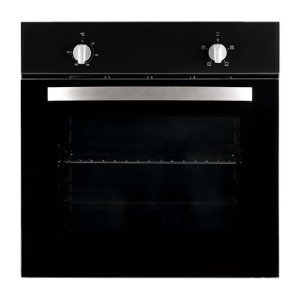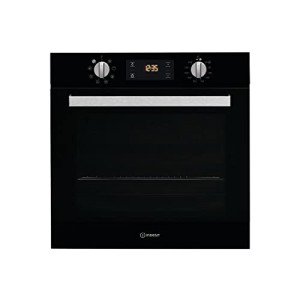
Single Built-In Ovens
Add a review FollowOverview
-
Sectors Recursos Humanos
-
Posted Jobs 0
-
Viewed 36
Company Description
Ten Oven For Kitchen-Related Stumbling Blocks You Shouldn’t Post On Twitter
Choosing the Right Oven for Your Kitchen: A Comprehensive Guide
Ovens have been a foundation of culinary ventures for centuries, offering a vital appliance for both amateur cooks and professional chefs alike. As contemporary kitchens progress, so too do the kinds of ovens offered, each designed to meet the diverse needs of cooking enthusiasts. The following guide supplies a comprehensive overview of different oven types, their features, and factors to consider to remember when choosing the ideal oven for your kitchen.

Kinds of Ovens
When thinking about an oven for your kitchen, it is necessary to understand the numerous types available. Each kind of oven has unique attributes that can affect cooking methods and overall kitchen functionality.

1. Traditional Ovens
Standard ovens are one of the most standard type, typically discovered in homes around the globe. They normally use either gas or electric power and use a simple cooking technique.
- Gas Ovens: Utilize natural gas or propane, supplying instantaneous heat and outstanding temperature level control.
- Electric Ovens: Use electric coils or a heating component, typically offering more even heat circulation.
2. Convection Ovens
Stove are developed with a built-in fan that flows hot air around the food, causing faster cooking times and more even results.
- Advantages:
- Reduced cooking times (up to 25% faster)
- Even baking and browning
- Downsides:
- May need changes to dishes (lower temperature level or much shorter time)
3. Wall Ovens
Wall ovens are a popular option in modern kitchens, as they can be set up at eye level, conserving counter area and increasing accessibility.
- Single Wall Ovens: Ideal for smaller sized cooking areas, suitable for everyday cooking.
- Double Wall Ovens: Increase capacity for big meals and multiple dishes.
4. Range Ovens
Range ovens integrate both a cooking range (with burners) and an oven, supplying a compact service for cooking areas with restricted space.
- Freestanding Ranges: Standalone units that can suit any kitchen layout.
- Slide-in Ranges: Designed to fit snugly in between cabinets for a more integrated look.
5. Steam Ovens
Steam ovens utilize steam instead of dry heat, protecting wetness and nutrients in food.
- Advantages:
- Healthier cooking option
- Perfect for baking bread and cooking vegetables
- Factors to consider:
- May need extra steps for particular meals
Key Features to Consider
When selecting an oven, consider the following functions that can enhance cooking experiences:
| Feature | Description |
|---|---|
| Size | Guarantee it fits your kitchen space and satisfies your cooking requires. |
| Self-Cleaning | Makes maintenance much easier, removing the requirement for manual scrubbing. |
| Smart Technology | Ovens with Wi-Fi connectivity can simplify cooking through apps. |
| Temperature level Range | A broader range can enhance cooking flexibility. |
| Safety Features | Functions such as automobile shut-off can enhance kitchen safety. |
Tips for Choosing the Right Oven
Selecting the ideal oven can sometimes be a difficult job. Here are several ideas to streamline the procedure:
-
Identify Your Cooking Habits: Consider how often you cook and the types of meals you prepare. For instance, avid bakers might choose a convection oven for even baking, while those who cook roasts might lean towards a conventional oven.
-
Step Your Space: Before purchasing, determine the area where the oven will be put to ensure it fits comfortably with your kitchen design.
-
Consider Your Budget: Ovens & Hobs range widely in price. It is very important to set a spending plan and think about the long-term value of the device.
-
Read Reviews: Online reviews can provide insight into a model’s performance and reliability over time.
-
Check Energy Ratings: Energy-efficient designs can conserve you money on utility bills in the long run.
Upkeep and Care
To take full advantage of the life expectancy of your oven, correct maintenance is essential. Follow these simple actions:
- Regular Cleaning: Make cleaning a practice after each usage, and make use of self-cleaning functions when offered.
- Examine Seals: Ensure that the door seals securely; this avoids heat loss during cooking.
- Calibration: Periodically examine the oven temperature level for precision. An oven thermometer can aid with this.
- Professional Servicing: Schedule regular maintenance consult a professional to make sure the home appliance runs effectively.
Frequently asked questions
What is the very best type of oven for a small kitchen?
For little kitchen areas, wall ovens or compact range ovens are excellent options as they use up less space and can be installed to fit into readily available cabinets.
How do I keep a gas oven?
Frequently check the burners for obstructions and guarantee that the oven’s interior is cleaned to avoid accumulation from spills and splatters.
Can I bake and broil in the exact same oven?
Yes, most contemporary ovens enable both functions. Examine the user handbook for particular instructions on running your oven.
What should I do if my oven isn’t warming correctly?
Initially, examine if it’s properly plugged in or if the gas is streaming. If issues persist, consult a professional to diagnose potential problems.
Is it worth purchasing a smart oven?
If cooking benefit and the most recent technology attract you, investing in a clever oven can be rewarding, as they use a range of enhanced cooking functions.
Picking the ideal oven for your kitchen is crucial to both the performance and pleasure of your cooking experience. By considering the different types of ovens, necessary functions, and maintenance tips, customers can make an educated choice that fulfills their culinary requirements and preferences. Whether you are a casual cook or a lover, the right oven can significantly elevate your cooking experiences.